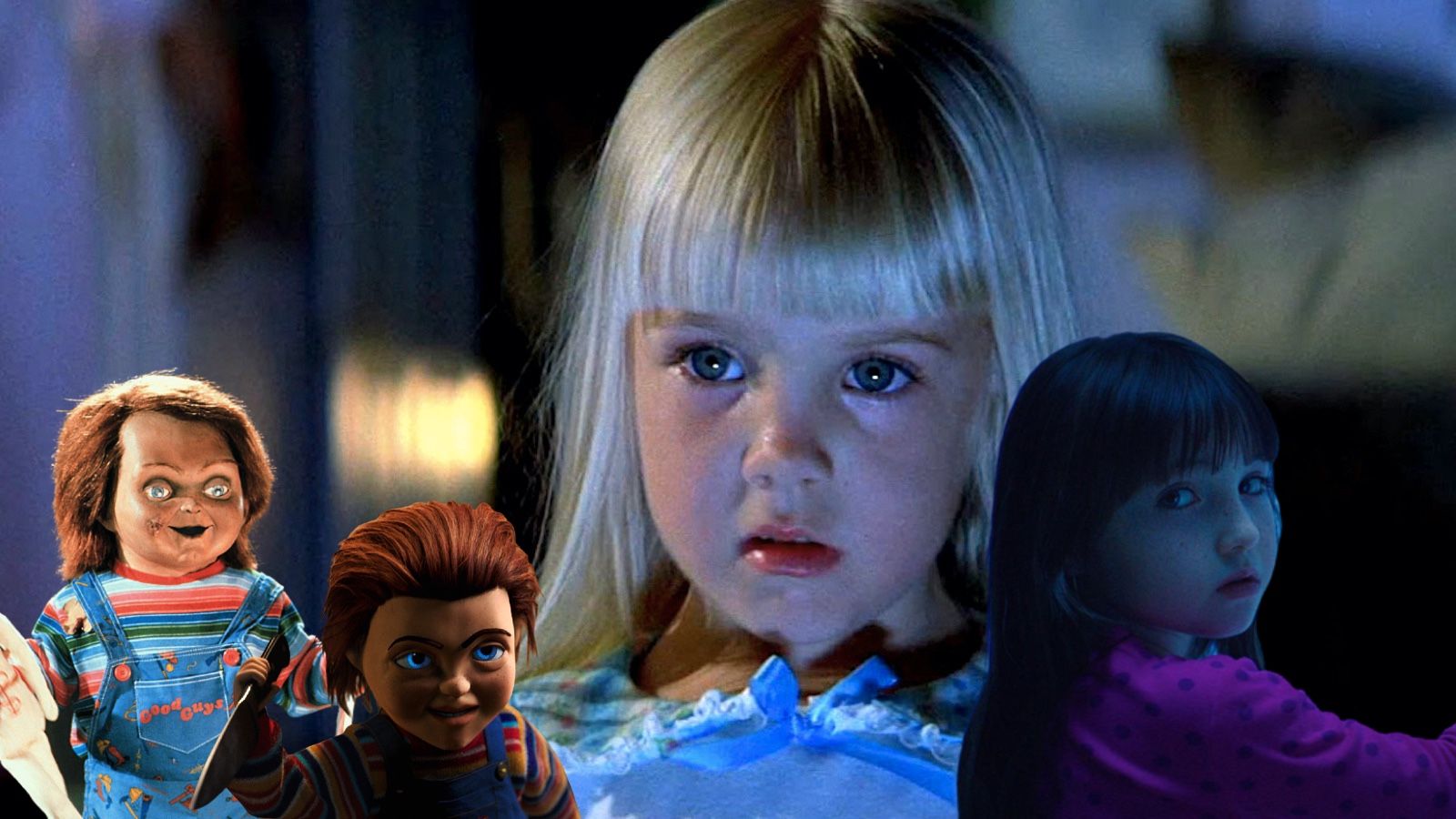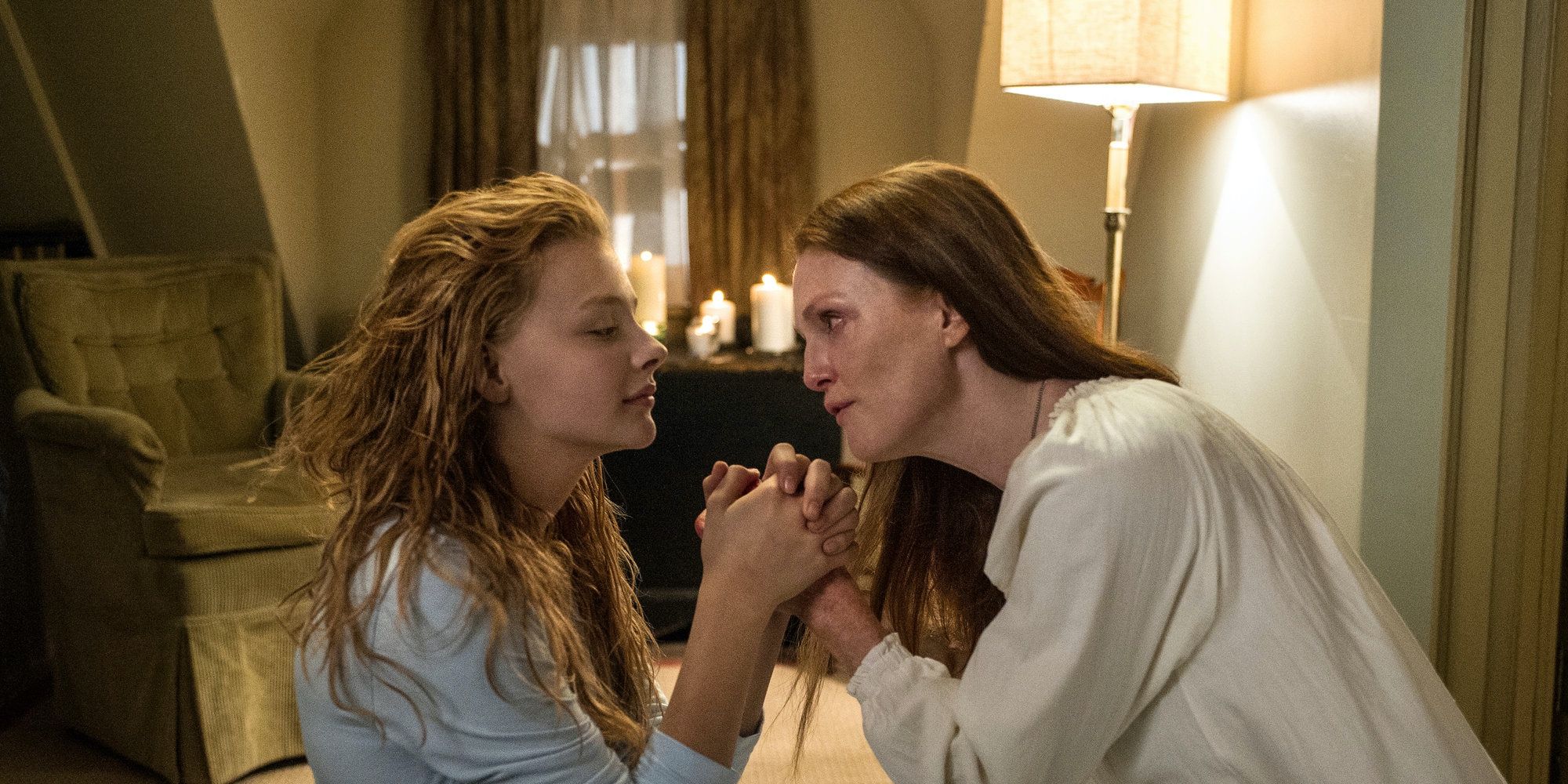
Remakes are an inevitable side that comes with filmmaking, but there are horror remakes that, in retrospect, should never have been made. In particular, the horror genre has been a melting pot for new and modernized ways to keep bringing these killers back to the big screen every few years. Although remakes can often be deemed as pointless, there have been successful ones in the past: The Grudge (2004), The Amityville Horror (2005), and It (2017) are prime examples.
Big budgets and fanbases to back up these huge franchises can come with much success, but they can also come with a considerable amount of backlash. For example, Rupert Wainwright’s 2oo5 remake of John Carpenter’s The Fog didn’t do well among critics, garnering just a 4% rating (via Rotten Tomatoes). Likewise, a 2022 reboot of Texas Chainsaw Massacre was recently released to mixed reviews, but the reception was mainly poor. One critic, Brian Tallerico, claimed the film “fundamentally fails at almost everything it’s trying to do” (via. Roger Ebert), highlighting how horror remakes can easily draw the ire of audiences and critics.
Horror remakes aren’t necessarily “bad,” as they can still be entertaining and scary to watch, yet they are often pointless. Many movies should have never left the drawing table, with the original left well alone. Horror remakes remain very popular, with remakes and reboots such as Halloween Kills, Candyman, and Chucky all being released in 2021, as well as a David Gordon Green reboot of The Exorcist set to release in 2022. Despite this, however, there are many revised versions of scary cinematic classics that should never have seen the light of day. Here is a breakdown of the most pointless horror remakes of all time.

Brian De Palma’s 1976 horror film Carrie is a classic, being one of those films that even horror haters are familiar with on some level. The film follows a shy 16-year-old girl named Carrie, (Sissy Spacek) who is constantly bullied and tormented by her classmates. Unknowingly, she discovers she has telekinetic powers and eventually uses them to seek revenge on those who hurt her. Carrie is often considered one of the best horror films of all time, with even director Quentin Tarantino placing Carrie at number eight on his favorite films (via. Indiewire).
The Carrie remake was released in 2013 and stars Chloë Grace Moretz as Carrie. The film isn’t necessarily poorly made – rather, it is just plain unnecessary. De Palma’s film is already a near-perfect adaptation of Stephen King’s novel, and it didn’t need to be touched. Director Kimberly Peirce’s film comes off as trying hard to relate to modern times. Scenes such as Carrie googling what “telekinesis” means and Carrie’s first period filmed and uploaded online come off as cheesy and out of touch. The original period scene of Carrie being ridiculed in front of her classmates is far more effective than the remake’s portrayal. Overall, the 1976 original scares and acting is timeless, and it didn’t need to be modernized at all. Even with Moretz and Julianne Moore, Kimberly Peirce’s Carrie could not be saved.

Don Mancini’s Child’s Play spawned a massive franchise, with six films following the original, as well as a recent SYFY series. For years, Mancini teased a reboot of some sort, so when a Child’s Play remake that was entirely unrelated to Mancini and the original franchise was announced, it was surprising, to say the least. Whereas Child’s Play is about a doll whose soul is inhabited by serial killer Charles Lee Ray, the remake is about a high-tech doll who goes on a killing spree due to a malfunction. In a way, the remake seems to be more of a cautionary tale about modern technology instead of about Chucky.
Lars Klevberg’s remake is a good horror movie at the brim. There’s blood, gore, and a pretty impressive cast. Mark Hamill does a unique take at Chucky, and Aubrey Plaza’s deadpan humor makes the film more of a dark comedy. For all this, however, the fact remains that the project didn't need to be a remake of the iconic franchise, and it would have been better without Chucky. Horror remakes seem to try to modernize the franchise somehow using the internet or modern technology. Overall, Child’s Play isn’t a bad movie; it’s just a pointless remake. The film would have been better as a stand-alone film about the dangers of A.I.

Japanese horror films had massive popularity in America in the early 2000s, making for a number of them to be remade, most notably Ring (1998/2002) and The Grudge (2002/2004). Takashi Miike’s 2003 One Missed Call was another J-horror film remade in 2008. Unfortunately for fans and critics, Éric Valette’s 2008 film is the worst-reviewed J-horror remake to date, having an actual 0% rating (via. Rotten Tomatoes). J-horror is so hard to recapture, as the genre is known for its slow-building, impending doom factor, and the way it can scare audiences by barely showing anything. One Missed Call is a Japanese horror classic that should never have been remade.
One Missed Call has a unique premise about people who begin to mysteriously receive cryptic voicemail messages from their future selves, foreshadowing how they’re going to die. Although the remake had a little box office success, critics tore the film apart, with critic Michael Gingold calling it “generic from top to bottom” and having a “series of genre clichés as if they’re brand spanking fresh” (via. Fangoria). Not only do the visual effects and acting turn the film into more comedic than scary, but the jump-scares are simple, bland, and bloodless. One Missed Call is a perfect example of why PG-13 horror films are rarely successful and might be a reason why the J-horror movie remake craze came to a halt in the mid-2000s.

Tobe Hooper’s Poltergeist (1982) is a horror classic about playful spirits that soon turn deadly in a Californian family’s home. The original was remade into a 2015 bland, forgettable, and pointless film. Not only is it not scary, but it is a remake that didn’t try anything new. Although many remakes are disliked for trying to modernize or change the film too much (such as Carrie), they at least tried to do something unique. The Poltergeist remake is so similar to the original that it is simply an unmemorable and clichéd film.
The remake doesn’t capture what made the original so unique. The family dynamic in Hooper’s film quickly connects them to the audience, making what happens to them much scarier. Steven and Diane Freeling (Craig T. Nelson, JoBeth Williams) are loveable, concerned parents, and their children Dana (Dominique Dunne), Robbie (Oliver Robins), and Carol Anne (Heather O’ Rourke) have some of the most memorable horror film lines. Everyone knows Carol Anne’s infamous line, “They’re here,” with her petite hands on the static television. Along with the forgettable new cast, the famous ghostly scenes are overtaken by CGI, cheaply used to replace what made the original so terrifying. Overall, the film is a lazy remake that didn’t do anything new or innovative, being yet again another pointless horror remake.
Comments
Post a Comment